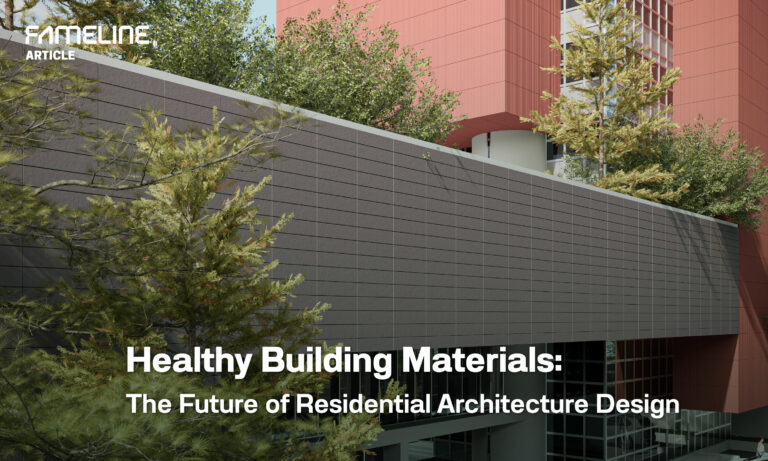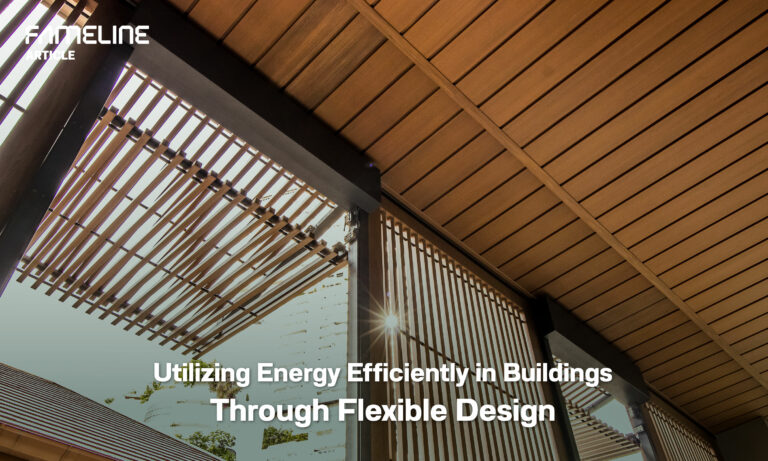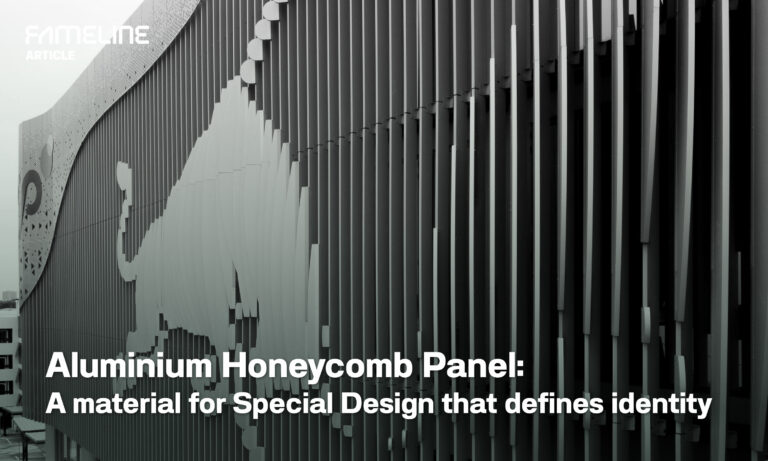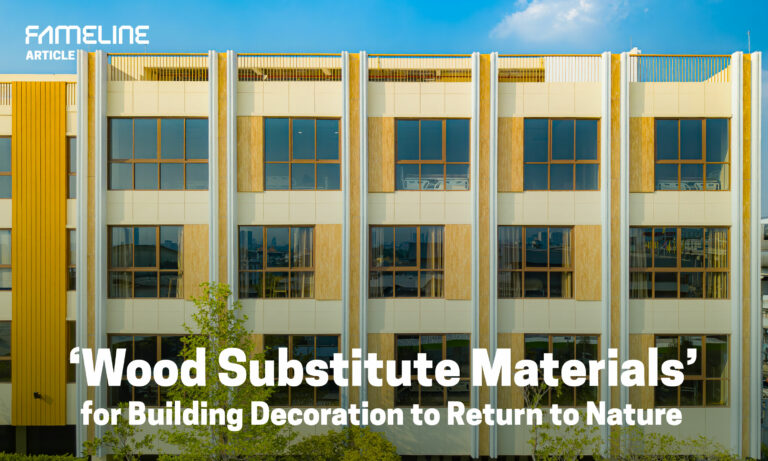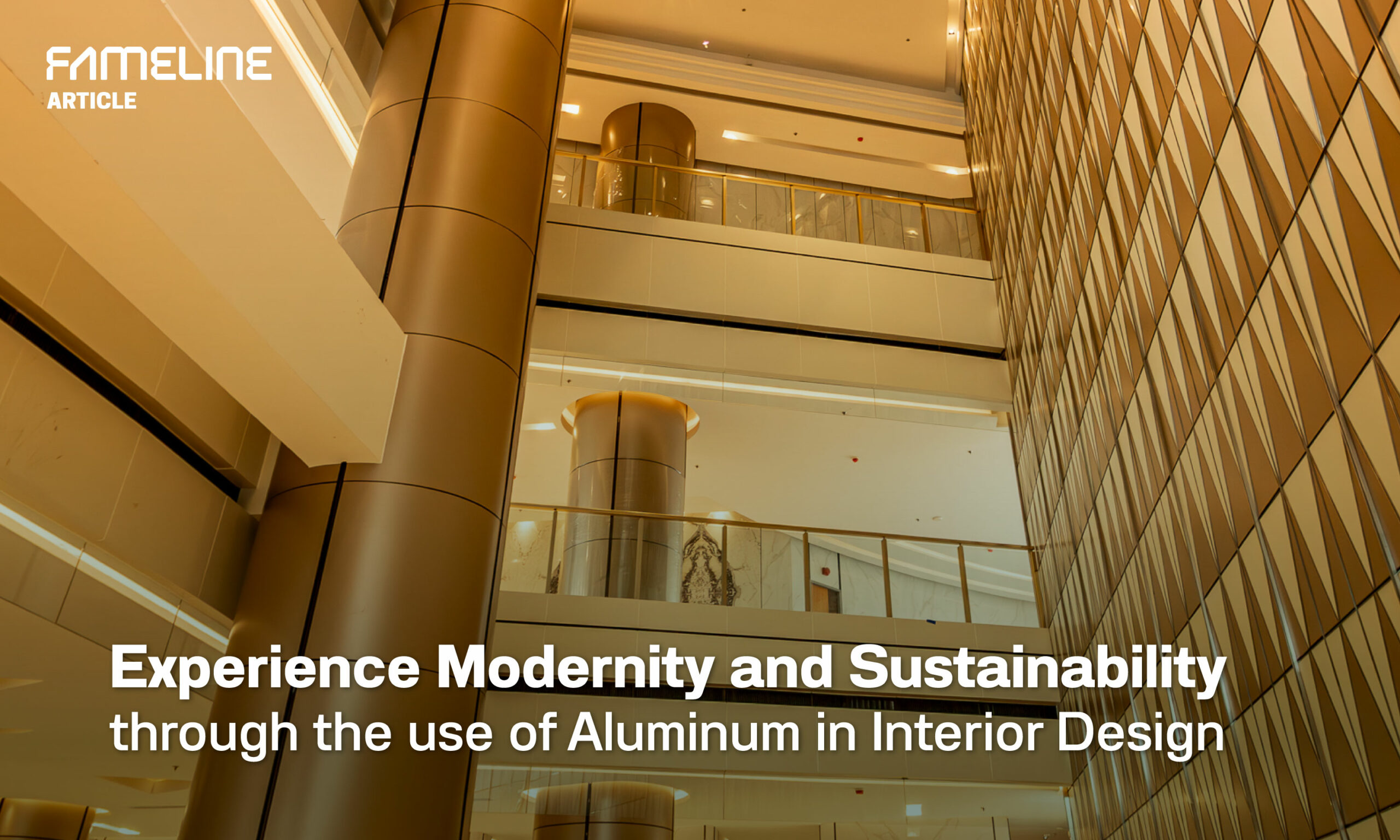
Experience Modernity and Sustainability through the use of Aluminum in Interior Design
Selecting the right materials for interior design is a crucial step in creating a space that is both beautiful and functional. With a wide range of options from natural to synthetic materials, it’s important to consider various factors to align with design goals and concepts. Durability is often a key consideration, especially in areas of frequent use prone to wear and tear, alongside the purpose of use and timeless beauty. These elements determine the color tones and atmosphere of the space, creating a fresh and appealing perspective.
Aluminum stands out for its ability to easily blend beauty with practicality through its smooth surface and metallic sheen, imparting luxury in every area. Its resistance to corrosion and environmental conditions makes it suitable for a variety of applications, especially in architectural designs familiar with using aluminum for building cladding in large, modern panels, for external wall decorations to obscure views, or as sunshades to reduce heat and sunlight in walkways.
Interior spaces, both public buildings and residential homes, have seen a diverse use of aluminum materials. Beyond its durability, the sustainability of aluminum, which can be recycled 100%, reduces the need for new production resources. Combined with the ease and speed of installation, aluminum has become a preferred choice for designers and project owners mindful of environmental factors and long-term investment value.
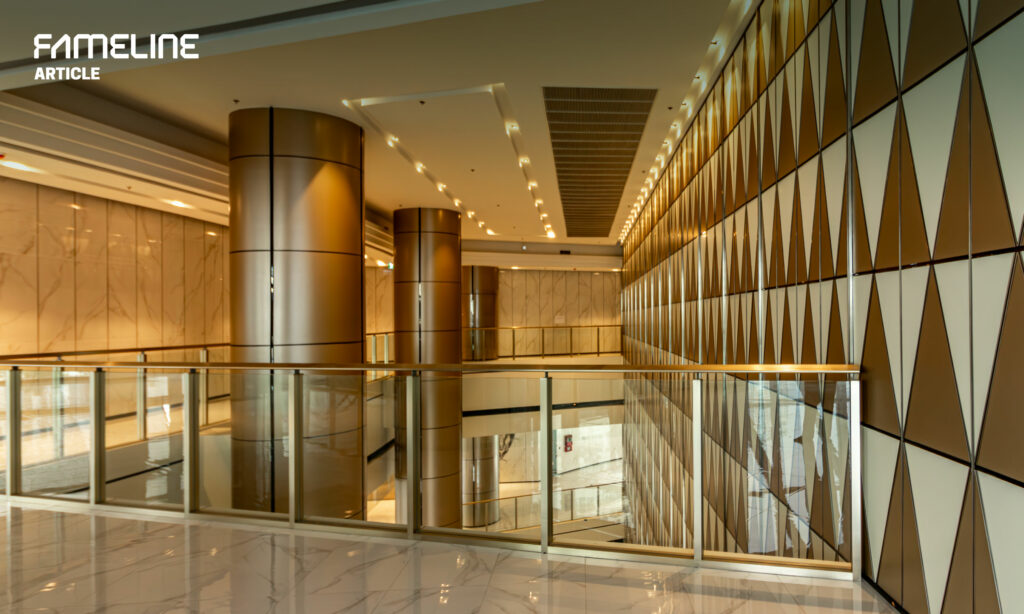
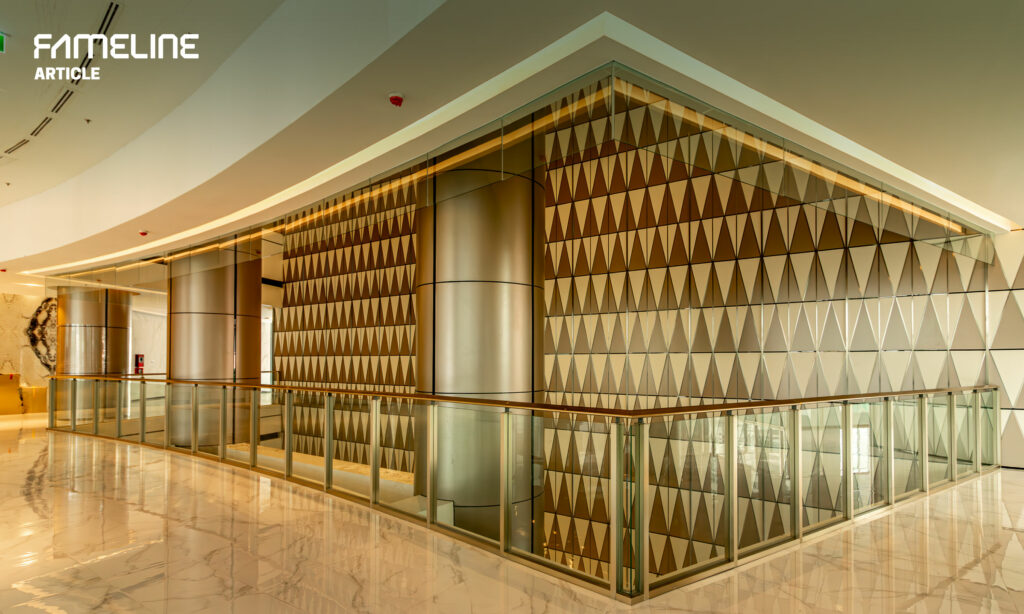
Beautifully Versatile Decoration
The application of aluminum materials in interior space decoration often aims to create a standout feature that surpasses the limitations of traditional construction materials. For instance, using Aluminum Composite Panels (ACP) for areas requiring durability and aesthetic appeal showcases the flexibility of these panels. They are a sandwich construction of aluminum sheets with a polyethylene (PE) core, allowing for the design of exceptionally large, curved shapes, angular folds, custom cuts, and even perforations for images or text. A wide range of color tones is available, from metallic hues to bright colors or natural wood patterns, expanding design freedom significantly.
Safer Decoration Options
Additionally, the lighter weight of these materials compared to others facilitates easier installation, reducing labor costs and construction time. This is suitable for new constructions and renovations alike, and ideal for use in retail stores in shopping malls, office buildings, museums, train stations, educational institutions, or airports. ACP materials from the FAMELINE brand meet the Class A2 fire safety standards for construction materials, limiting flame spread and reducing flammability and fire propagation. This is considered in conjunction with the use of a fire-resistant (FR) polyethylene core in the panels, and standardized installation processes, to ensure global safety standards for buildings and enhance reliability for occupants in public buildings.
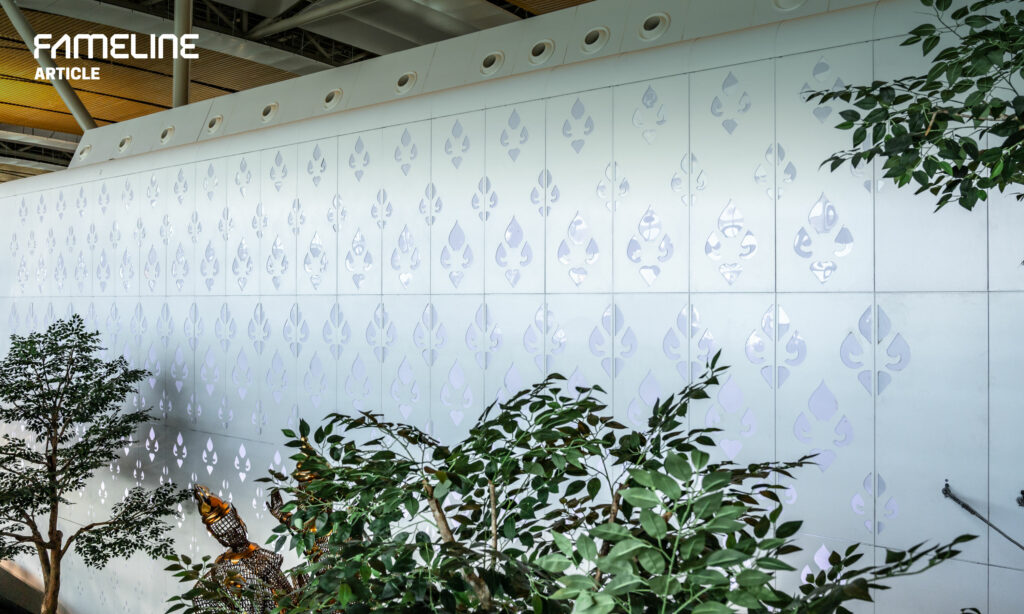

Communicating Atmosphere Through Ceiling Design
The design of ‘ceiling’ spaces is a way to add comprehensive details to the overall design concept, addressing functional requirements while contributing to the well-being of the occupants within the building. The diverse range of aluminum ceilings from FAMELINE offers another option for making this area stand out and convey different atmospheres.
For example, aluminum ceilings in tile and plank formats, which include smooth panels and perforated panels, are suitable for areas with overhead systems that require access for maintenance. If there’s a need to enhance sound quality in office buildings, seminar rooms, meeting rooms, classrooms, or main entrance halls, interior decoration with acoustic materials, like Acoustic Ceilings or perforated aluminum square panels (Perforated) with Acoustic Sheets, can absorb up to 80% of sound (with a maximum NRC value of 0.8). This helps to minimize the impact of noise pollution within the space, improves work efficiency, and leads to better living conditions for the building’s occupants.
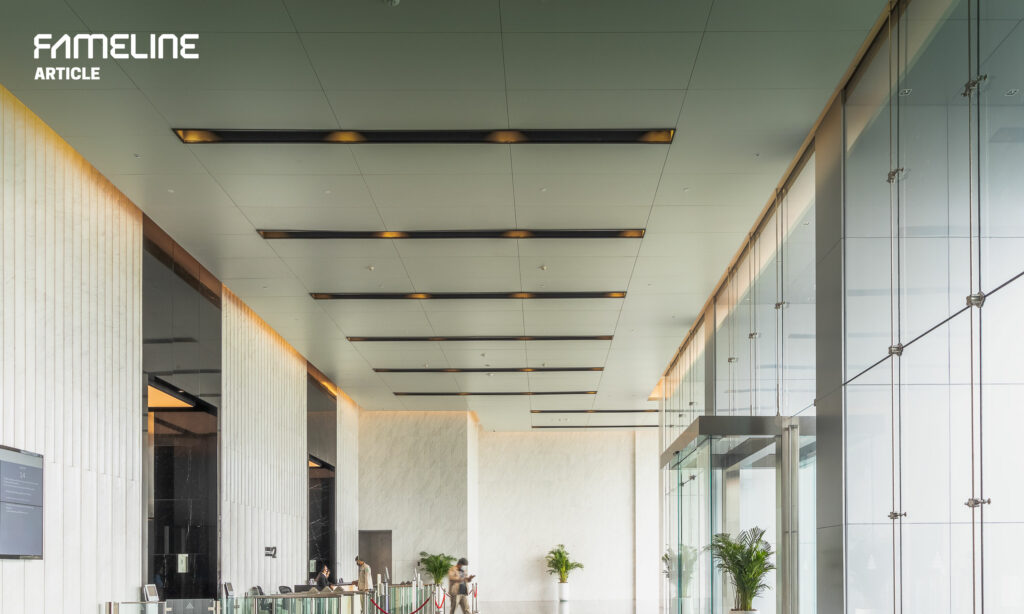
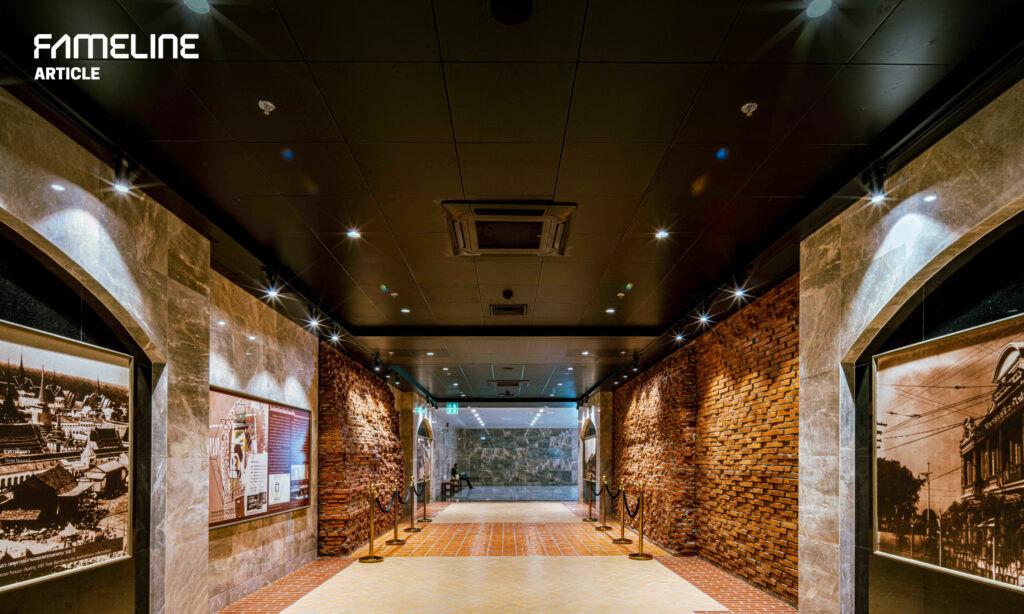
Summary
The benefits of aluminum in interior design extend beyond just practicality; it signifies a timeless elegance that elevates the versatility of interior spaces. It enables architects to create modern areas, offering a valuable investment due to its durability, quality certification at an international level, and widespread use in world-class architecture. Importantly, it’s an environmentally conscious material, aligning with the principles of sustainability that the construction design industry bears a significant responsibility towards society. From small furniture components to large decorative walls, aluminum demonstrates boundless adaptability and supports innovative design concepts, leading to new inspirations drawn from the essence of sustainability.
Related Articles
